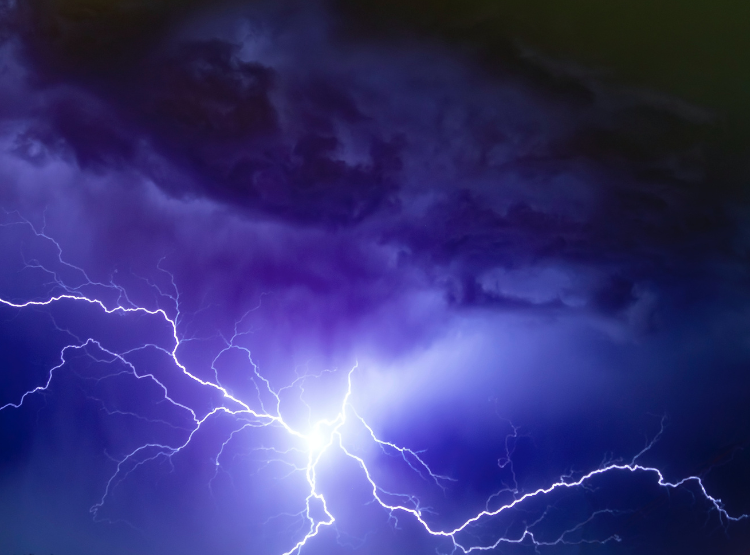Life on Earth quickly became independent from lightning as a nitrogen source, says new study
 Lightning’s role in making nitrogen available for life on Earth may have been relatively short-lived, according to a new study led by researchers at the University of St Andrews Centre for Exoplanet Science.
Lightning’s role in making nitrogen available for life on Earth may have been relatively short-lived, according to a new study led by researchers at the University of St Andrews Centre for Exoplanet Science.
Although lightning has been invoked as a major source of bioavailable nitrogen for life on early Earth, the new research, published in the journal Nature Geoscience, shows that our home planet’s biosphere quickly became independent from this nutrient source.
These results will also help with identifying the source of nitrate deposits on Mars and possibly other planets and moons in our Solar System.
Nitrogen is a key element for the origin and evolution of life as we know it. Like today, nitrogen in the atmosphere of early Earth was mainly present in the form of unreactive N2-molecules, denying organisms easy access to this resource.
Some microorganisms are capable of converting N2 gas into bioavailable forms like ammonium, but before the emergence of this metabolism, energetic processes such as lightning must have been responsible for breaking apart these N2molecules.
To investigate how lightning can make nitrogen available for life, researchers at the University of St Andrews, together with colleagues from the Space Research Institute (IWF) of the Austrian Academy of Sciences in Graz and from Brown University in the USA, conducted a series of spark discharge experiments.
They filled glass flasks with water and different gas mixtures, resembling the atmospheres of modern and early Earth, and then subjected these gas mixtures to an electric discharge of nearly 50,000 volts. After the experiments, the scientists measured the composition of the gas mixture and water and detected increased concentrations of nitric oxide, nitrite, and nitrate.
Patrick Barth, first author of this study and PhD student at the St Andrews Centre for Exoplanet and the IWF, said: “Our results show that lightning can efficiently produce nitrogen oxides in the CO2-rich atmosphere that likely existed on early Earth. This provides a potential source of nutrients for life at that time and on planets outside of our Solar System.”
However, the isotopic composition the researchers found in their spark experiments does not match that of nitrogen archived in the rock record of early Earth. This discrepancy suggests that lightning was not a major source of nitrogen as microbial life evolved.
Instead, these results provide another piece of evidence that microorganisms have been able to convert N2 gas into bioavailable forms for more than three billion years.
There are, however, a few rock samples from the Isua Greenstone Belt on Greenland which are nearly 3.8 billion years old, and whose isotopic composition could potentially be explained by nitrogen contributions from lightning.
Dr Eva Stüeken from the School of Earth and Environmental Sciences at the University of St Andrews, and a member of the St Andrews Centre for Exoplanet Science, said: “This suggests that lightning may have supported the earliest life on Earth. Now that we have established the isotope signature of lightning, it may help investigate the origin of nitrate deposits on Mars.”
To communicate the impact of the findings, the team has collaborated with artists to create an exhibition, which includes a video by Patrick Barth on the role of lightning on exoplanets. The research also inspired a short story, A Spark in a Flask, published in the Science-Fiction anthology Around Distant Suns, which tells the tale of a robot taking care of spark experiments on the Moon.
Professor Christiane Helling, co-founder of the St Andrews Centre for Exoplanet Science and director of the IWF, said: “To communicate our science, it is important to reflect the extraordinary uniqueness of the Earth’s atmosphere in the astronomical context.”
The paper ‘Isotopic constraints on lightning as a source of fixed nitrogen in Earth’s early biosphere ‘is published in Nature Geoscience and is available online.
Please ensure that the paper’s DOI (https://doi.org/10.1038/s41561-023-01187-2) is included in all online stories and social media posts and that Nature Geoscience is credited as the source.
Issued by the University of St Andrews Communications Office.